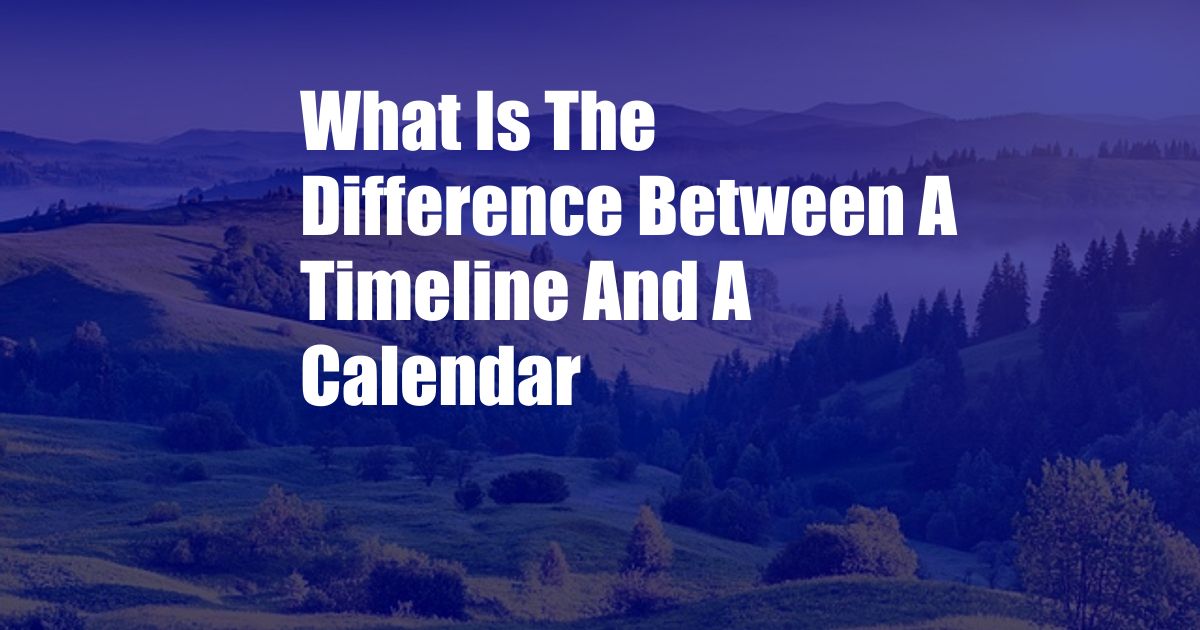
What’s the Difference Between a Timeline and a Calendar?
As I sat down to plan my wedding, I realized I needed a way to keep track of all the tasks and events leading up to the big day. I could use a calendar, but I also wanted to visualize the sequence of events. That’s when I stumbled upon a timeline. But wait, what’s the difference between a timeline and a calendar?
In this article, we’ll dive into the world of timekeeping and explore the intriguing differences between timelines and calendars. From their definitions and history to their applications and modern trends, we’ll uncover the essence of each.
Timelines: A Linear Progression of Events
A timeline is a visual representation of events arranged in chronological order. It depicts a series of events along a line, with time flowing from left to right. Each event is marked by a point on the line, and the distance between the points represents the time elapsed between the events.
Timelines are particularly useful for visualizing the sequence of events in a project, a historical period, or a biography. They allow us to see how events unfolded over time and identify patterns or relationships between them. They are commonly used in project management, history books, and educational materials.
Calendars: Systematic Time Measurement Tools
A calendar is a system for organizing and measuring time. It divides time into units such as days, weeks, months, and years. Calendars help us keep track of the current date, plan events, and schedule appointments.
Unlike timelines, calendars are not necessarily linear. They can be designed to repeat themselves, such as the Gregorian calendar we commonly use. Calendars are also often used to mark important events or holidays, such as religious festivals or national anniversaries.
Key Differences Between Timelines and Calendars
- Purpose: Timelines focus on displaying the sequence of events, while calendars are used for time measurement and scheduling.
- Structure: Timelines are linear, while calendars can be linear or cyclical.
- Emphasis: Timelines highlight the relationships between events, while calendars emphasize the current date and time.
- Applications: Timelines are ideal for project planning, historical analysis, and storytelling. Calendars are essential for scheduling, appointment tracking, and daily planning.
Modern Trends and Developments
In recent years, we’ve seen advancements in both timelines and calendars. Digital tools have made it easier to create and share timelines, and interactive calendars allow for real-time collaboration and event management.
One notable trend is the use of data visualization for timelines. By incorporating data points or annotations into timelines, we can create more informative and visually appealing representations of events.
Tips for Creating Effective Timelines and Calendars
- Define Your Purpose: Determine the specific use case for your timeline or calendar before you start creating it.
- Choose the Right Format: Select a format that aligns with your purpose and audience. Linear timelines are suitable for historical events or project planning, while calendars are better for scheduling and timekeeping.
- Be Accurate and Concise: Ensure that the dates and information in your timeline or calendar are accurate and easy to understand.
- Use Visual Cues: Colors, icons, or images can help make your timeline or calendar more visually appealing and informative.
- Share and Collaborate: Leverage digital tools to share and collaborate on timelines with others, facilitating team coordination and project management.
Frequently Asked Questions
Q: Can I use a timeline and a calendar together?
A: Yes, many project management tools allow you to link a timeline to a calendar, providing a comprehensive view of events and scheduling.
Q: What are some alternative ways to visualize time?
A: Gantt charts, network diagrams, and project management boards all offer different ways to visualize and manage time-based projects.
Q: How can I make a timeline or calendar more engaging?
A: Incorporate multimedia elements such as images, videos, or audio recordings to make your timeline or calendar more interactive and appealing.
Conclusion
Timelines and calendars are two powerful tools for organizing and visualizing time. By understanding the key differences between them, you can choose the right tool for your specific needs.
Whether you’re planning a project, studying history, or simply managing your daily schedule, timelines and calendars can empower you to track time effectively and make informed decisions.
Are you an avid timeline user or calendar enthusiast? Share your experiences in the comments below and let’s explore the fascinating world of time management together!